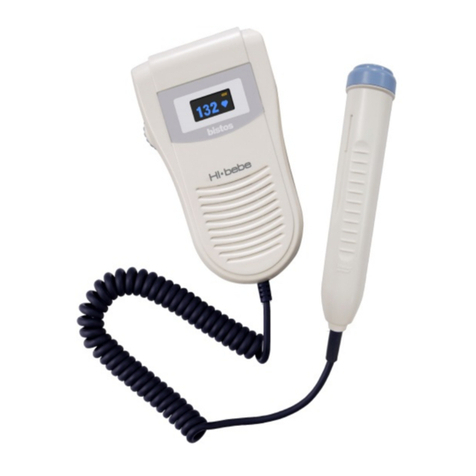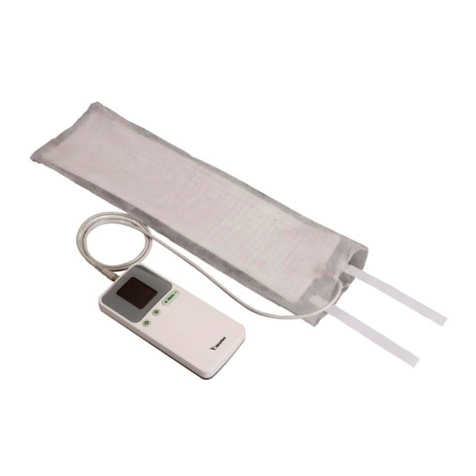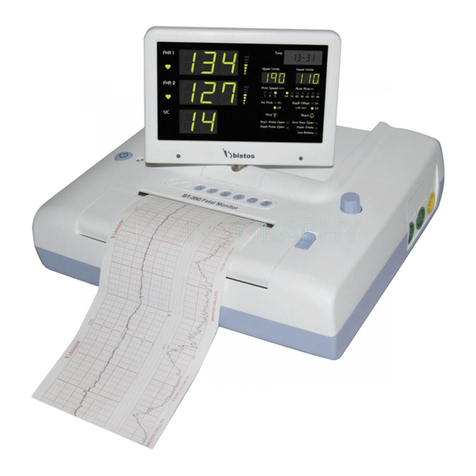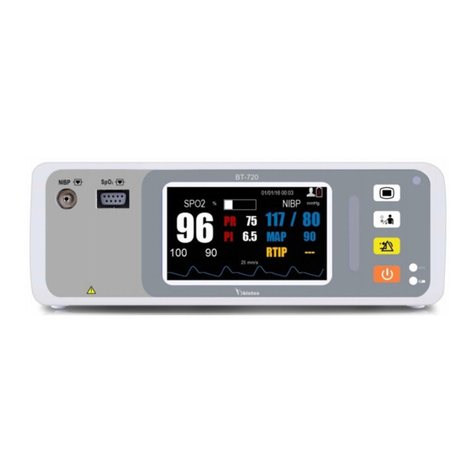Bistos BT-710 User manual

BT-710 Hand held pulse oximeter
Operation Manual
Keep this manual for future reference
P/N : 710-ENG-OPM-EUR-D01

BT-710 Operation manual
1
P/N : 710-ENG-OPM-EUR-D01
Bistos Co., Ltd.
2018.05
Proprietary Material
Information and descriptions contained in this manual are the property of Bistos Co., Ltd. and
may not be copied, reproduced, disseminated, or distributed without express written
permission from Bistos Co., Ltd.
Information furnished by Bistos Co., Ltd is believed to be accurate and reliable. However, no
responsibility is assumed by Bistos for its use, or any infringements of patents or other rights of
third parties that may result from its use. No license is granted by implication or otherwise
under any patent or patent rights of Bistos Co., Ltd.
The information contained herein is subjects to change without notice.
Prepared by:
Bistos Co., Ltd.
7th FL., A Bldg., Woolim Lions Valley 5-cha,
302, Galmachi-ro, Jungwon-gu, Seongnam-si,
Gyeonggi-do, Korea
Telephone: +82 31 750 0340
Fax: +82 31 750 0344
Revision D01
May, 2018
Printed in Korea
Copyright © Bistos Corporation 2018. All rights reserved.

BT-710 Operation manual
2
P/N : 710-ENG-OPM-EUR-D01
Bistos Co., Ltd.
2018.05
Contents
0. Safety information ······················································································· 4
0.1 General precautions, warnings and cautions ···························································· 6
0.2 Shock hazards ············································································································· 10
0.3 Battery warnings········································································································· 11
0.4 General precautions on environment ······································································· 12
1. System basics ······························································································· 13
1.1 Intended use ··············································································································· 14
1.2 Operating principle ····································································································· 14
1.3 System configurations ································································································ 14
1.4 Product outlook ·········································································································· 15
1.5 Description of pulse oximeter ···················································································· 17
1.6 Understanding the display ························································································· 19
1.7 Essential performance ································································································ 20
2. Preparing for operation ················································································ 21
2.1 Installation ·················································································································· 21
2.1.1 Unpack and check ······························································································ 21
2.1.2 Power requirements ·························································································· 21
2.1.3 Environmental requirements·············································································· 22
2.2 Connecting to power ·································································································· 22
3. Basic operations ··························································································· 23
3.1 Turn on························································································································ 23
3.1.1 Check the pulse oximeter ·················································································· 23
3.1.2 Start the pulse oximeter ···················································································· 23
3.1.3 Connect the sensors···························································································· 23
3.1.4 Start monitoring ································································································· 24
3.2 Turn off ······················································································································· 24
4. Setup the pulse oximeter ············································································· 25
5. SpO2············································································································ 28
5.1 Overview ····················································································································· 28
5.2 Safety information ····································································································· 29
5.3 Monitoring steps ········································································································ 30
5.4 Setting SpO2················································································································ 30
5.5Measuring influencing factors ····················································································· 32
6. Review ········································································································ 33
7. Alarm ··········································································································· 35
8. Battery ········································································································ 36
8.1 Battery usage guide····································································································· 37
8.2 Checking battery performance ·················································································· 38
8.3 Battery recycling ········································································································· 38

BT-710 Operation manual
3
P/N : 710-ENG-OPM-EUR-D01
Bistos Co., Ltd.
2018.05
9. Caring and cleaning ······················································································ 39
9.1 Overview ····················································································································· 39
9.2 Cleaning ······················································································································ 39
9.3 Disinfection ················································································································ 40
10. Maintenance ································································································ 41
10.1 Checking ··················································································································· 41
10.2 Trouble shootings ····································································································· 42
10.3 Maintenance plan ···································································································· 42
11. Accessories ·································································································· 43
12. Specifications ······························································································· 44
12.1 Safety specification ·································································································· 44
12.1.1 Product category ······························································································ 44
12.1.2 Power ··············································································································· 44
12.2 Hardware specifications ··························································································· 44
12.3 Functional specification ··························································································· 45
13. Manufacturer’s declaration on EMC ····························································· 46
13.1 Electromagnetic emissions ······················································································· 47
13.2 Recommended separation distances between portable and mobile RF communications
equipment and BT-710 ····································································································· 48
13.3 Electromagnetic immunity ······················································································· 49
Product Warranty ······························································································ 51
Figure 1-1: Front view ············································································································ 15
Figure 1-2: Rear view ············································································································· 15
Figure 1-3: Top view ·············································································································· 16
Figure 1-4: Bottom view ········································································································ 16
Figure 1-5: Front view ············································································································ 17
Figure 1-6: Top view ·············································································································· 17
Figure 1-7: Bottom view ········································································································· 18
Figure 1-8: Standard display ·································································································· 19

BT-710 Operation manual
4
P/N : 710-ENG-OPM-EUR-D01
Bistos Co., Ltd.
2018.05
0Safety information
Before using BT-710 Pulse oximeter, read this entire manual and be fully understood the
following safety information to prevent injury of patient and user.
Symbols Used
The following symbols identify all instructions that are important to safety. Failure to follow
these instructions can lead to injury or damage to the pulse oximeter. When used in
conjunction with the following words, the symbols indicate:
WARNING
Can lead to serious injury or death.
CAUTION
Can lead to minor injury or product/property damage
The following symbols are placed on product, label, packaging and this manual in order to
stand for the information about:
Used to identify safety information.
Be well-known this information thoroughly before using BT-710.
Used to identify safety information.
Be well-known this information thoroughly before using BT-710
IPX2
Indicates the protection level against the ingress of liquid.
IPX2 is protection from some water drops when the device is tilted up
to and including 15°.
It correspond the device and the accessory for SpO2.
Refer to operation manual. Read manual before placing the device.
Indicates the production date.
Indicates the manufacturer.
Indicates the serial number of the device.
Indicates the authorized representative in the European Community of
manufacturer.
Indicates a defibrillation-proof type BF applied part.
Indicates CLASS II equipment.(Adapter)
Other manuals for BT-710
1
Table of contents
Other Bistos Medical Equipment manuals
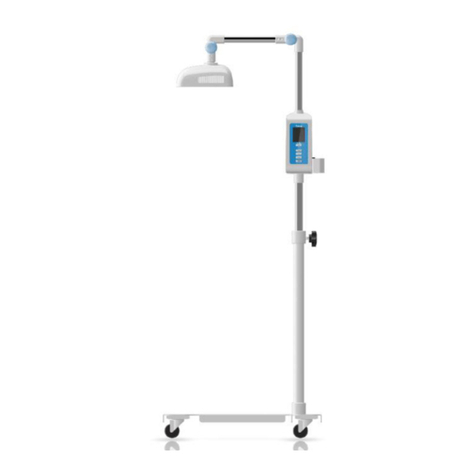
Bistos
Bistos BT-400 User manual

Bistos
Bistos BT-350 User manual
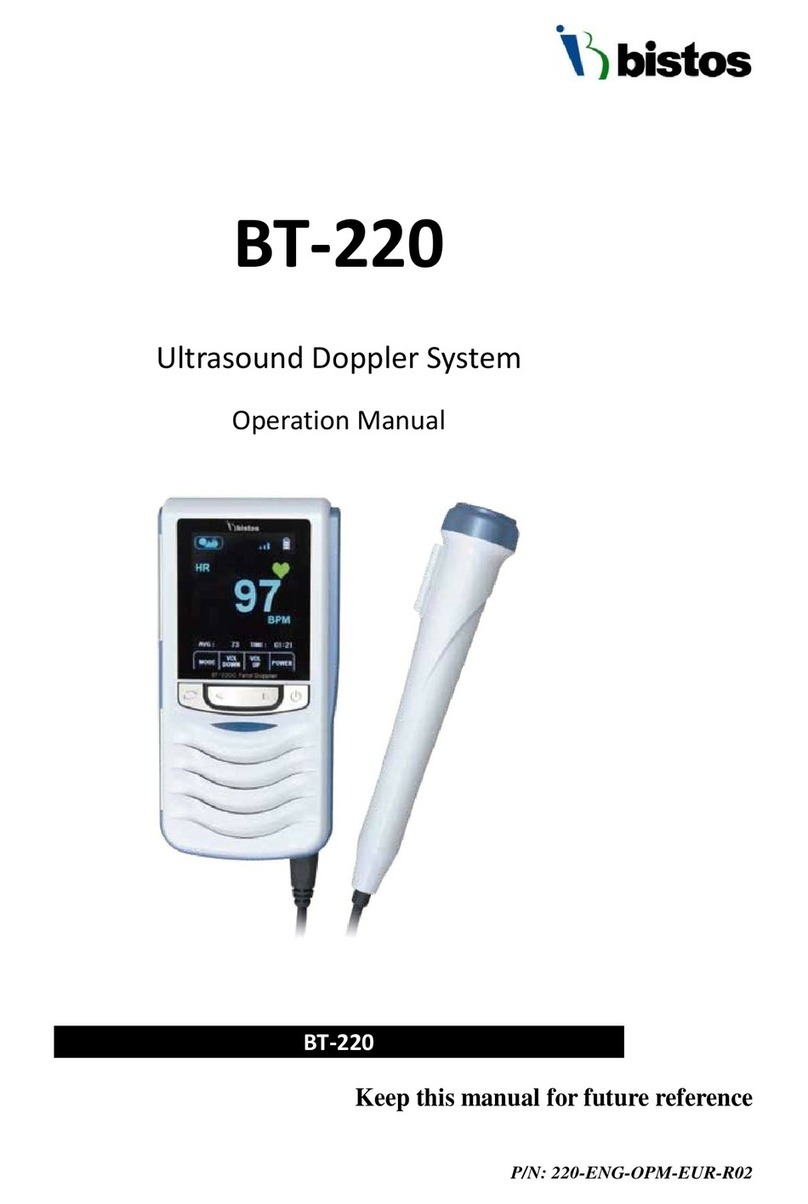
Bistos
Bistos BT-220 User manual
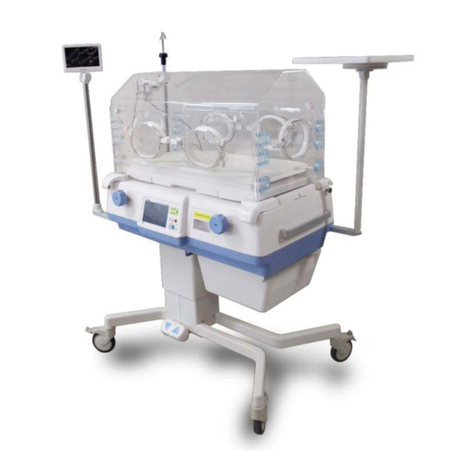
Bistos
Bistos BT-500 User manual
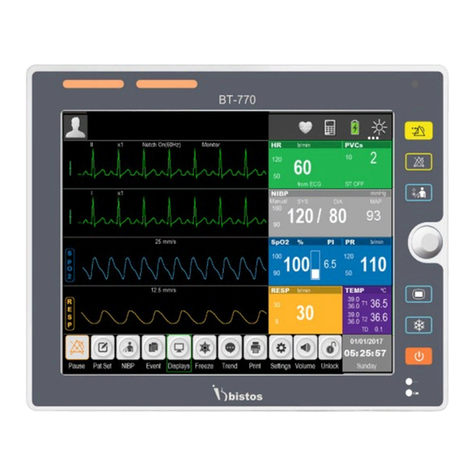
Bistos
Bistos BT-770 User manual
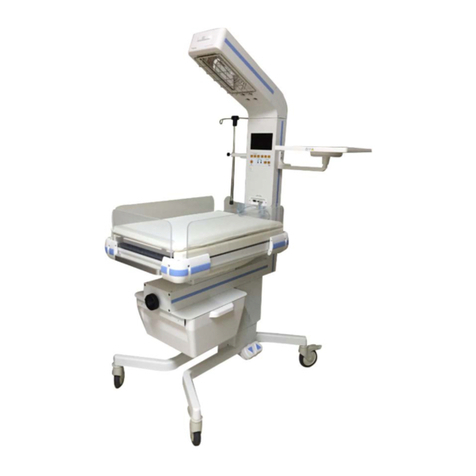
Bistos
Bistos BT-550 User manual
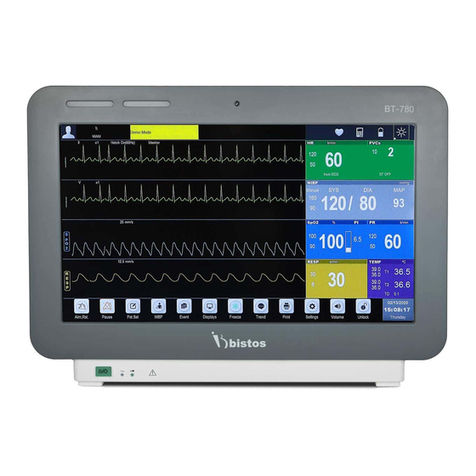
Bistos
Bistos BT-780 User manual
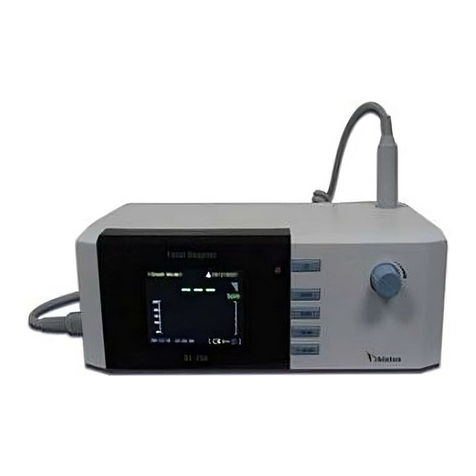
Bistos
Bistos BT-250 User manual
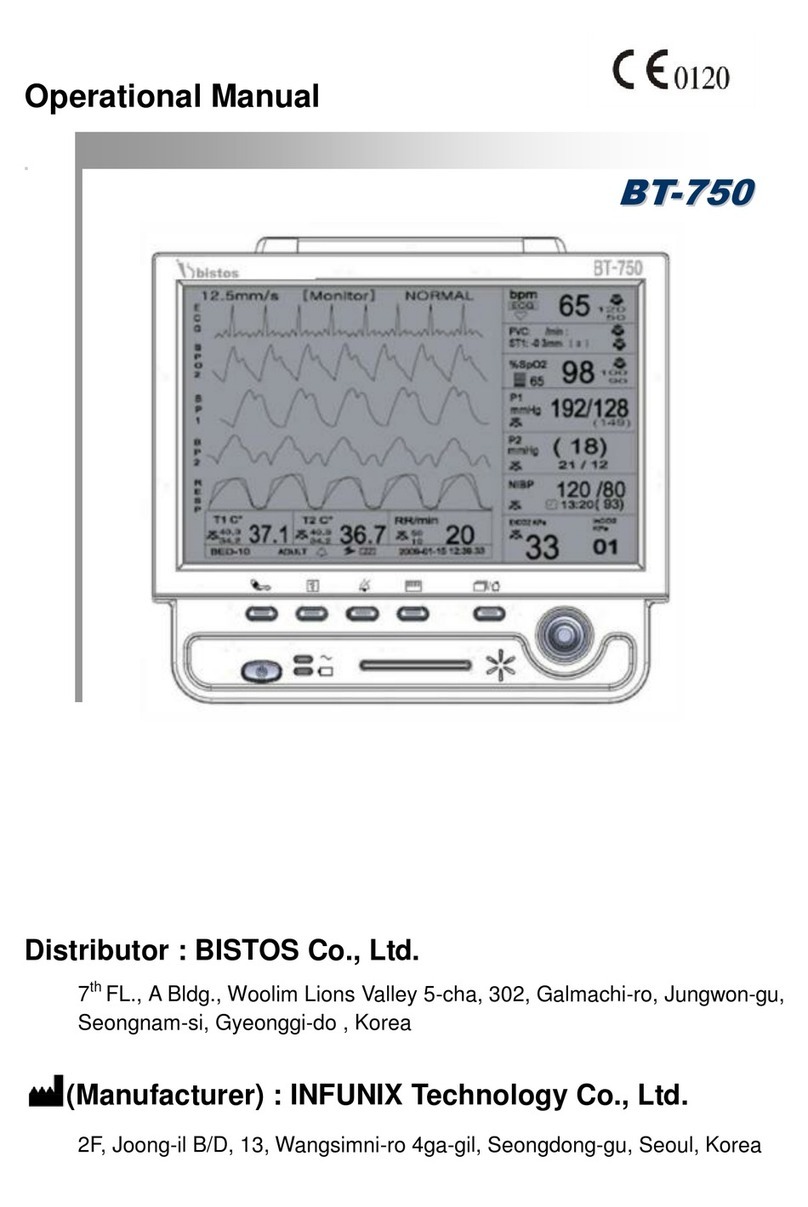
Bistos
Bistos BT-750 User manual
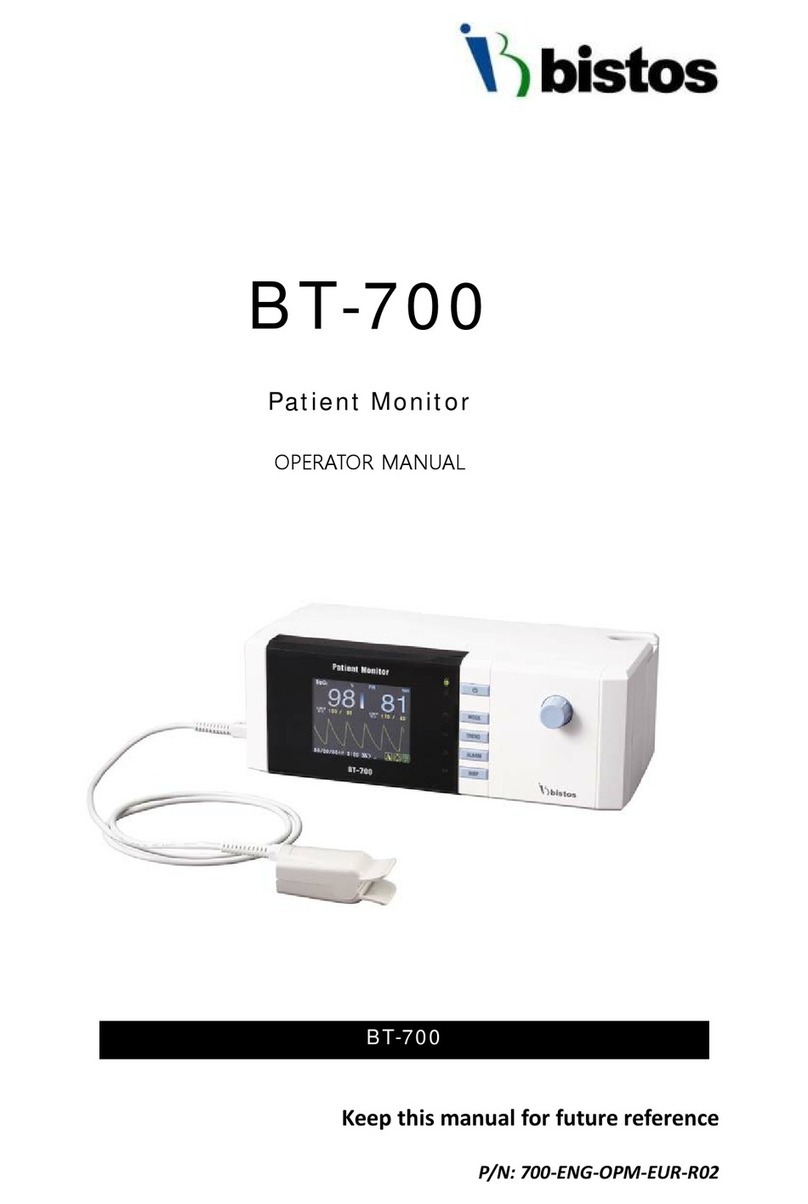
Bistos
Bistos BT-700 User manual
Popular Medical Equipment manuals by other brands

Getinge
Getinge Arjohuntleigh Nimbus 3 Professional Instructions for use

Mettler Electronics
Mettler Electronics Sonicator 730 Maintenance manual

Pressalit Care
Pressalit Care R1100 Mounting instruction

Denas MS
Denas MS DENAS-T operating manual

bort medical
bort medical ActiveColor quick guide

AccuVein
AccuVein AV400 user manual
